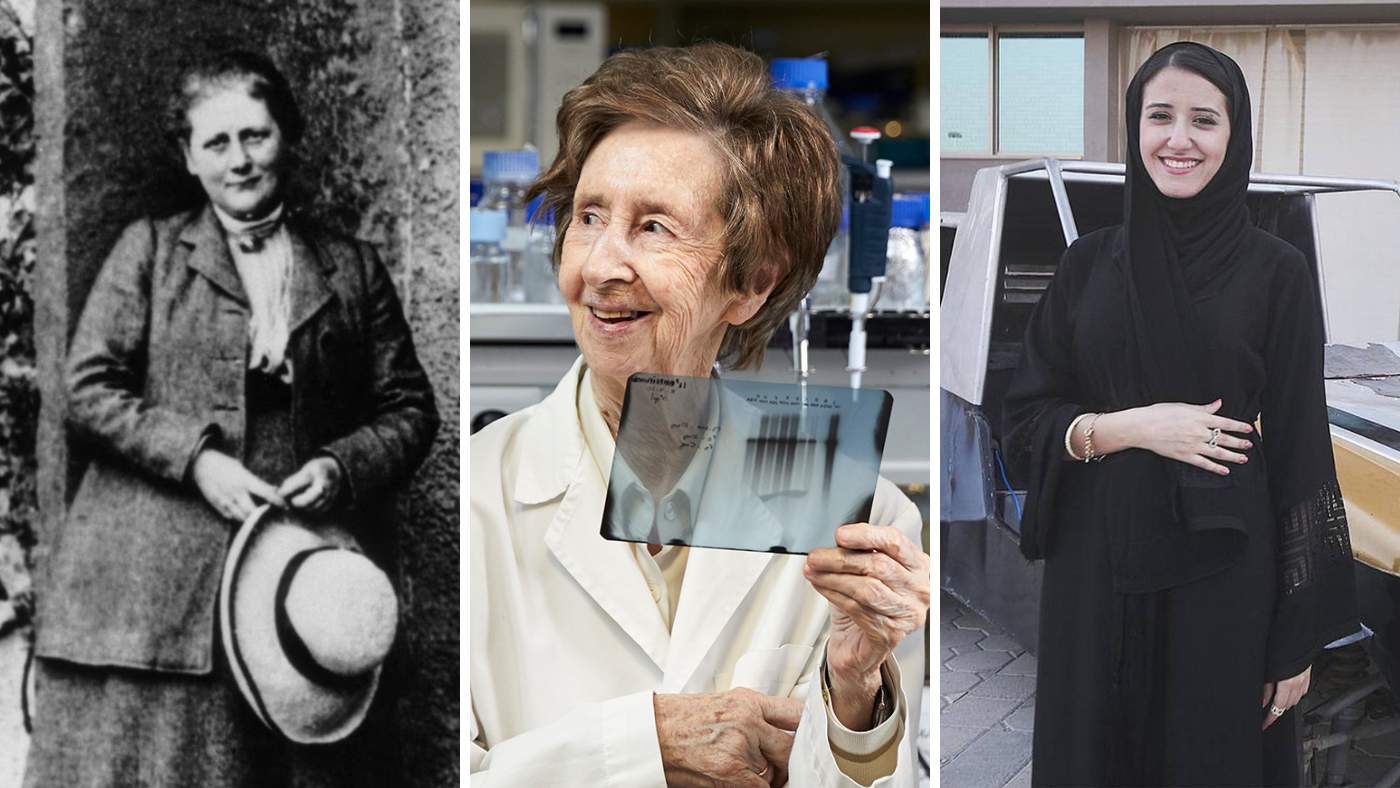
#HerstoryofScience, from Beatrix Potter to Reem Al Marzouqui
It is not just one type of person (male, with good grades, interested exclusively in scientific and technological topics) who is best oriented for innovation in STEM areas. Meet ten women from all around the world, spanning 200 years, who have made significant contributions to the way we live today and how we understand nature.
Beatrix Potter (Great Britain, 1866-1943), writer and illustrator, discovered the reproduction cycle of fungi
If you love Beatrix Potter’s animal stories (1866-1943), you should know that the author of “The Tale of Peter Rabbit” was also a pioneer in mycology, studying fungi. She was one of the first people to cultivate fungi from spores. Potter postulated that mold is another stage of fungal growth and not a different organism, as was previously thought.
In addition to creating her fantastic characters, Beatrix Potter studied and illustrated the reproductive system of fungal species such as the scarlet waxcap (Hygrocybe coccinea) and the tiny Dasyscypha calycina, which grows on pine tree trunks. Her discoveries were not widely accepted at the time, as women were not allowed to be part of scientific societies.
However, she demonstrated her artistic talent in biology as well. While her works featuring animals who dressed and spoke like humans and lived fun adventures in Victorian England are more famous, many of her scientific illustrations of fungal species and detailed drawings of insects have been preserved.
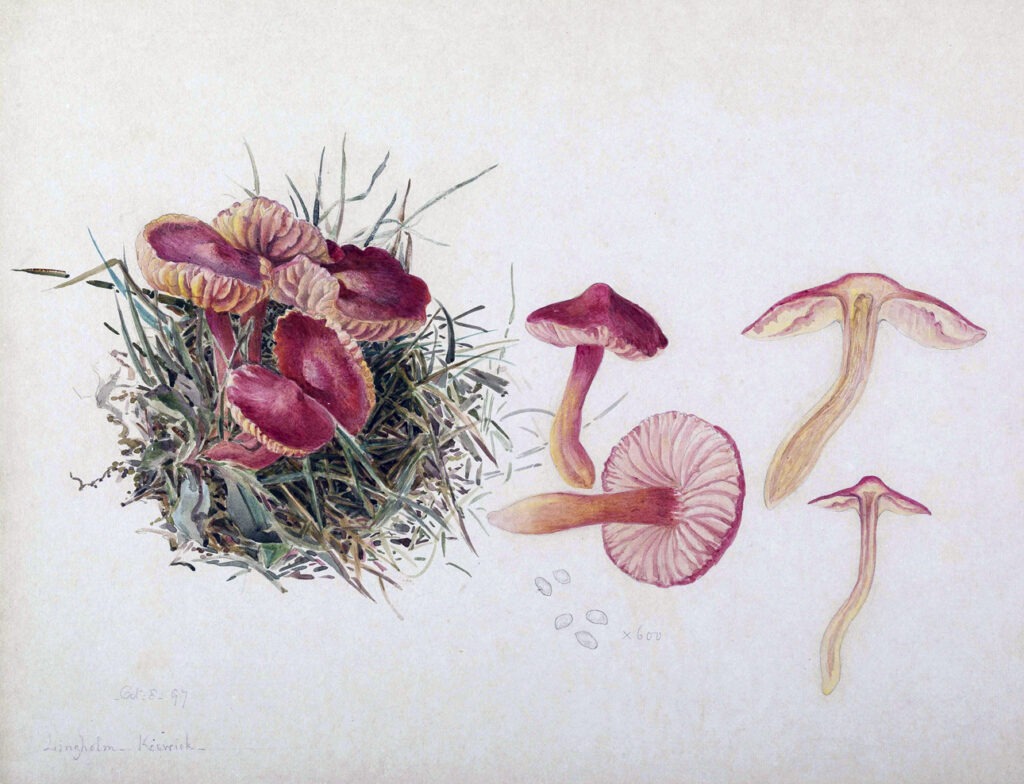
Mary Anderson (USA, 1866-1953), entrepreneur, and inventor of the windshield wiper
Mary Anderson (1866-1953) was an American entrepreneur and inventor. In the winter of 1902, while traveling in New York on a streetcar, she noticed that the conductor frequently stepped out of the vehicle to clean the front window, which was covered with rainwater and ice. This significantly delayed the journey and posed a danger to city traffic. In 1903, Anderson patented a mechanical windshield cleaning device that could be operated inside the vehicle.
However, Anderson was not the only woman with the instinct and initiative to improve automotive safety. In 1917, Canadian singer Charlotte Bridgewood patented the first automatic windshield, and her daughter, silent film actress Florence Lawrence, invented the first turn signal and the first brake light. None of these three women made money from their inventions, but their innovations improved road safety for everyone.
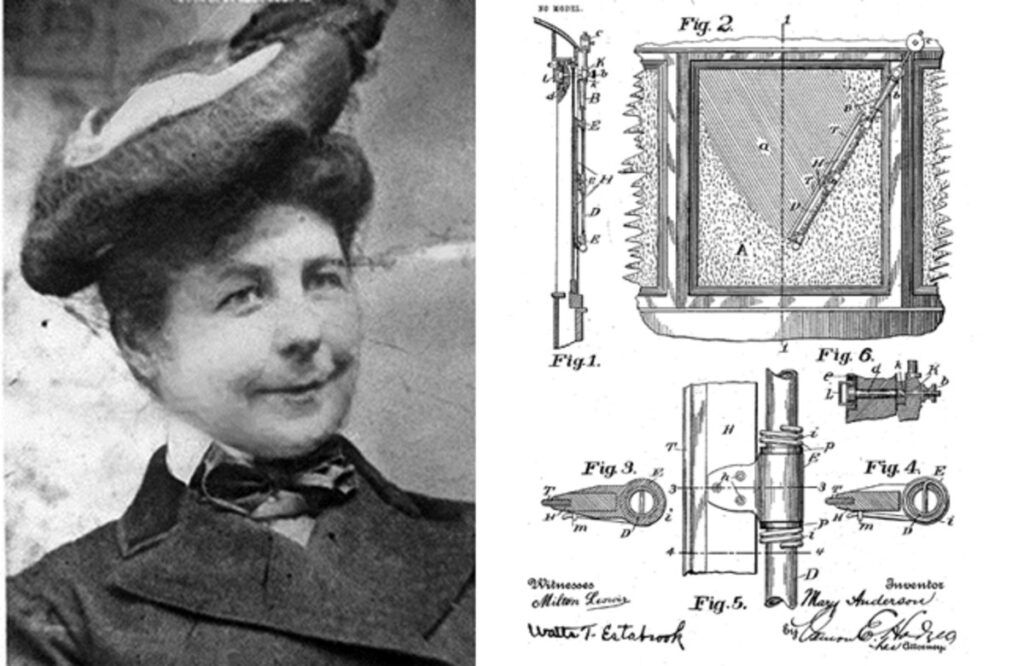
Helene Winterstein-Kambersky (Austria, 1900-1966), singer, invented the waterproof mascara
The heat from the stage lights, the nervousness before the curtain rises. Austrian singer Helene Winterstein-Kambersky (1900-1966) loved music and had a great talent for opera. However, she was bothered by ending performances with her face smeared by mascara. She wanted everything to be perfect in the staging. So, she set out to formulate her own sweat-resistant mascara. It is said that in her own kitchen, she tried two thousand different recipes until she found the perfect mixture: she had invented the first waterproof mascara. This product led to others, and when her singing career ended due to illness, she started her own cosmetics company.
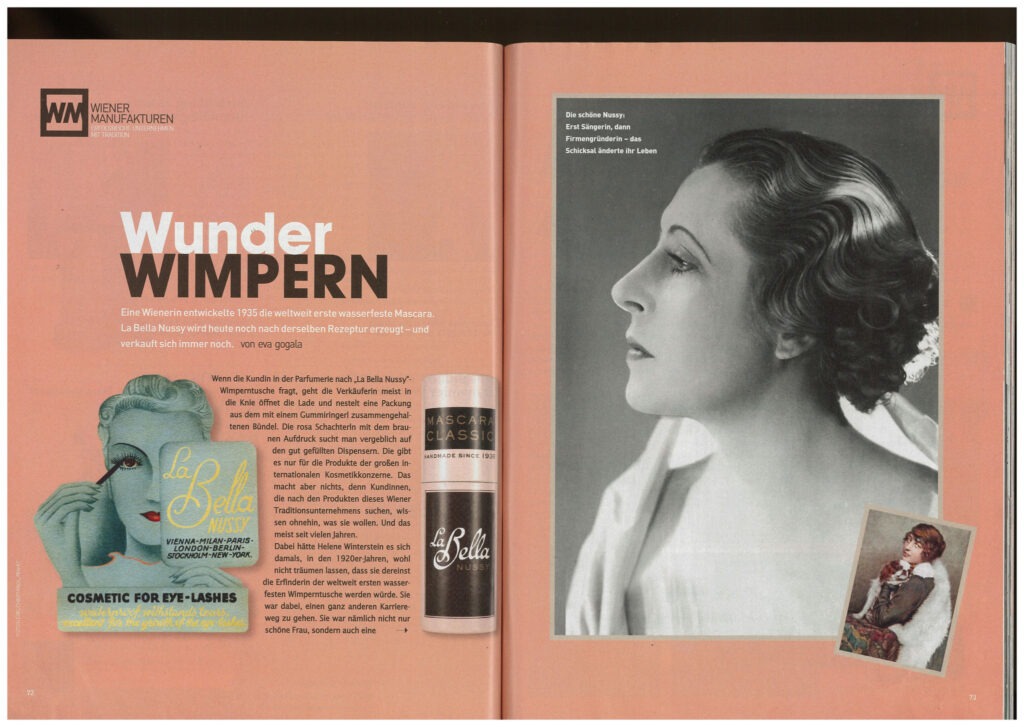
Valerie Hunter Gordon (Great Britain, 1921-2016), homemaker, invented the eco-friendly disposable diaper
The scent of a baby is one of the most pleasant stimuli for many people. But sometimes, it doesn’t smell so pleasant. A baby goes through approximately 2,500 diapers a year. In the mid-20th century, some pioneers thought of ways to make our hygiene consumption more efficient.
When British inventor Valerie Hunter Gordon (1921-2016) had her third child, disposable diapers did not yet exist. So, she devised “PADDI,” a biodegradable disposable diaper system with a washable cover. By 1960, 6 million of her diapers had been sold. Later, she created the “Nikini,” a combination of panties and bikini, considered the first sanitary pad for menstruation.
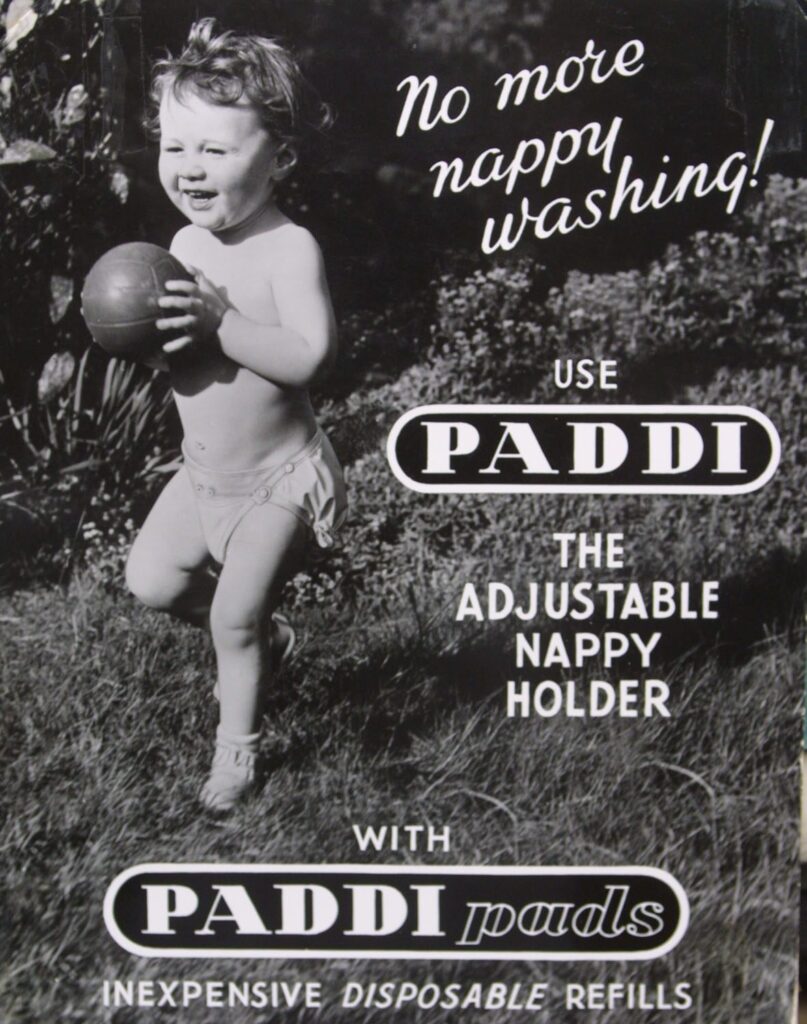
Margarita Salas (Spain, 1938-2019), biochemist, and inventor of a DNA amplifier
Margarita Salas Falgueras (1938-2019) was a trailblazer in Spanish research. She discovered the reading direction of the genetic code, various mechanisms of protein synthesis, and the protein that enables DNA replication. In 2019, the European Patent Office awarded her the Inventor of the Year prize, a double win for her entire career and the popular vote, unprecedented in the history of the award. To this day, Margarita Salas’s phi29 DNA polymerase is the most profitable patent in the history of the Spanish National Research Council. This invention is particularly useful in times of viral pandemics. The phi29 DNA polymerase enzyme she discovered allows for the amplification of small DNA samples, enabling fast virus detection.
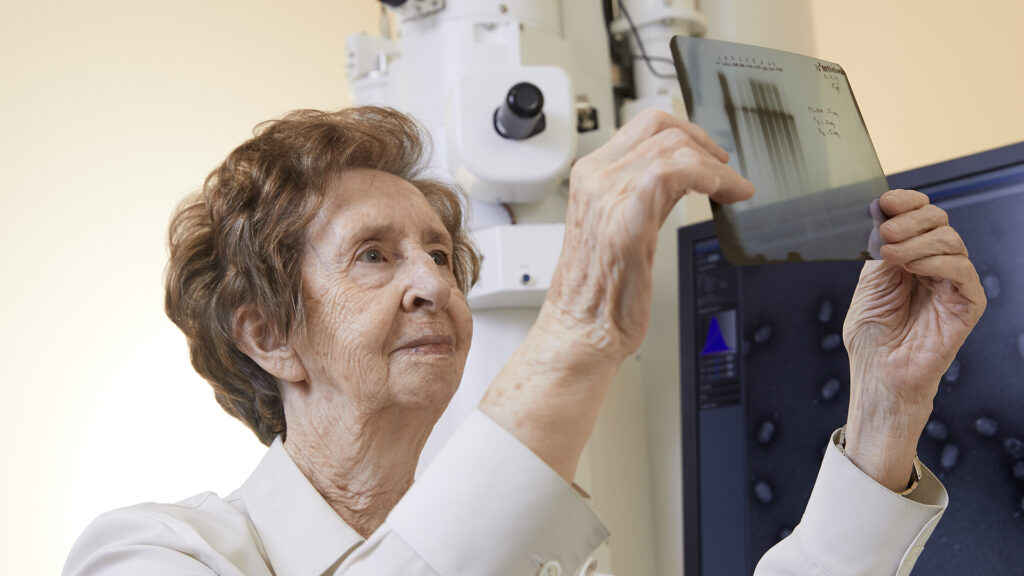
Pratibha Gai (India, b. 1948), physicist, and inventor of the atomic-resolution electron microscope
After more than twenty years of work, Pratibha Gai (India, b. 1948) and Edward D. Boyes succeeded in developing an electron microscope capable of observing chemical reactions at the atomic scale. Atomic! This advanced transmission electron microscope allows the observation of chemical reactions at the atomic level. Using it, Gai became the first person to see how atoms behave during a chemical reaction. Until then, one could only see the before and after of the reaction.
Her invention may allow for the observation of the world’s smallest chemical reactions, but her generosity is immense. After all this effort, Pratibha Gai chose not to patent the microscope. She was not interested in making money but rather in contributing to science and basic research. She wanted as many people as possible to use her microscope for the common good.
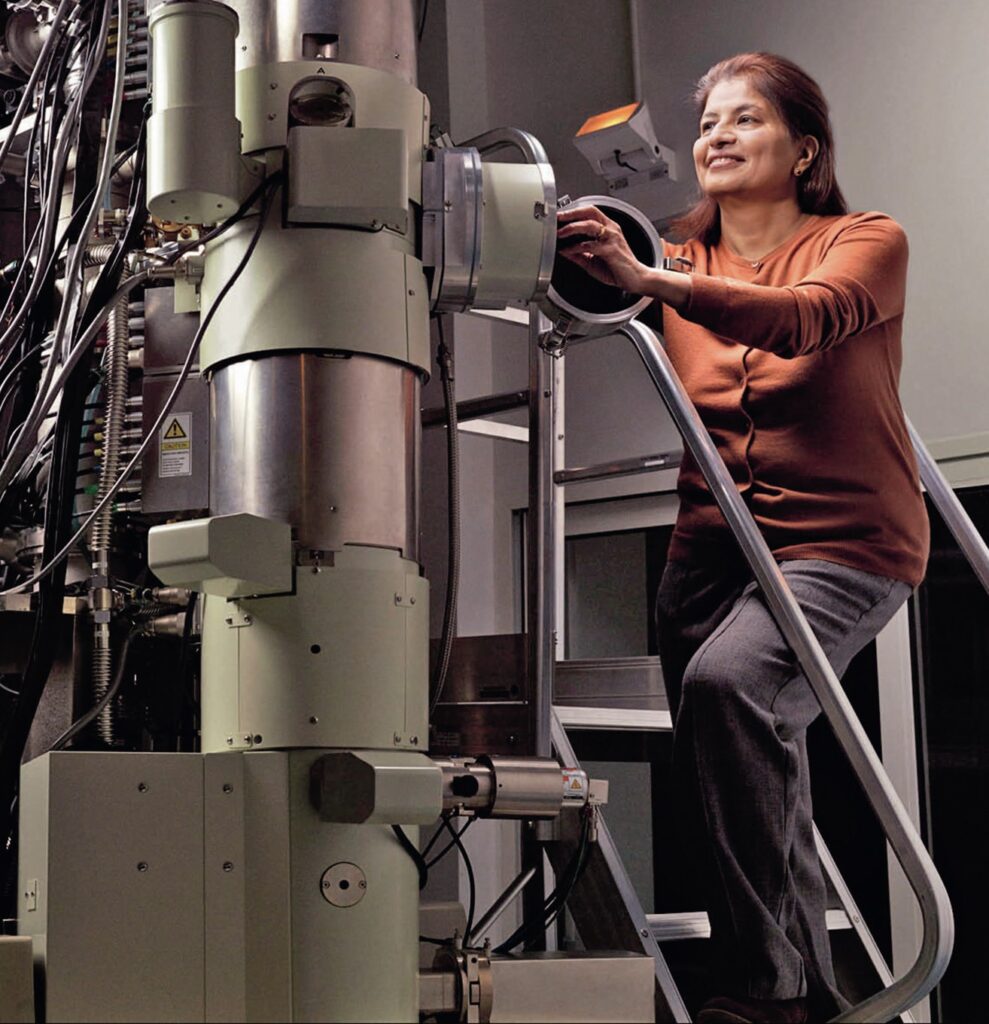
Ingeborg Hochmair-Desoyer (Austria, b. 1953), engineer, invented the cochlear implant for the deaf
Your auditory system functions thanks to twenty-five thousand nerve fibers that transmit acoustic signals captured by your inner ear to the brain, where the information is interpreted, allowing you to understand what you are hearing. Due to the complexity of this system, until the 1970s, most experts believed that hearing could not be restored. How could it be possible, with so many lines of communication damaged? To achieve this, the determination of a girl who raised caterpillars and butterflies, built radios from spare parts, and had a clear passion for biomedical engineering since the age of 13 was crucial.
Ingeborg Desoyer (Austria, b. 1953) studied medicine and electronic engineering. Alongside her husband Erwin Hochmair, she designed the world’s first multichannel microelectronic cochlear implant. It was the first implant capable of directly sending signals to the auditory nerve. By coupling it to various regions of the cochlea, which capture different frequencies of sound waves, they made it possible for a deaf patient to understand words without the need to read lips for the first time. Since then, hundreds of thousands of people have benefited from such implants.
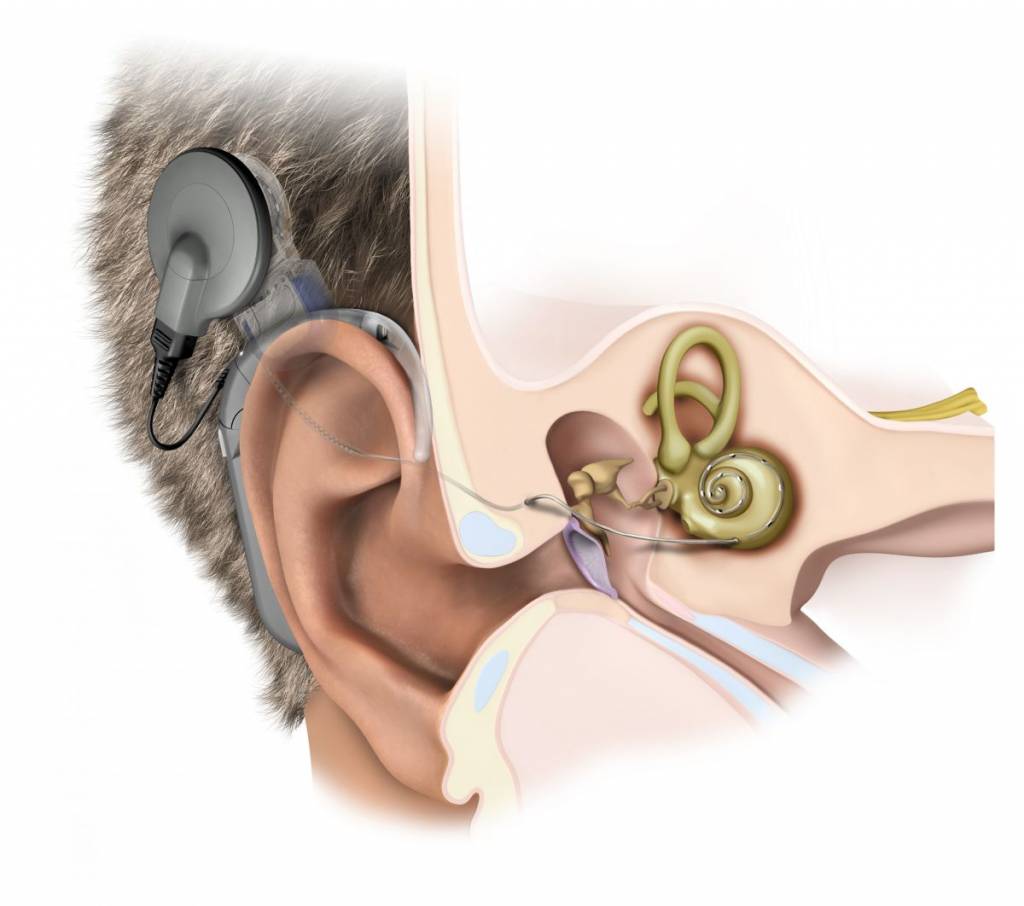
Vivian Wing-Wah Yam, 任詠華 (Hong Kong, b. 1963), chemist, and inventor of OLED technology
Do you know how images on a mobile phone or television are generated? On a screen, the smallest or indivisible part of each image, the pixel, has three color filters (red, green, and blue) that can be combined to display the entire visible spectrum of colors. In an LCD screen, the first layer of bright light is placed below the LCD circuit and the pixel layer. In this system, where there is always a light in the background, reproducing the color black is challenging. Additionally, it consumes more energy.
Chemist Vivian Wing-Wah Yam, 任詠華 (Hong Kong, b. 1963), developed liquid organic semiconductors known as OLEDs, which have the advantage of being much smaller than conventional diode or LED light sources, which are made of solid crystals and cannot be manufactured at micrometer sizes. When applied to displays, OLEDs allow each pixel to have its own light source, creating lightweight, even flexible devices that consume less energy and produce images with colors that are less bright but more accurate.
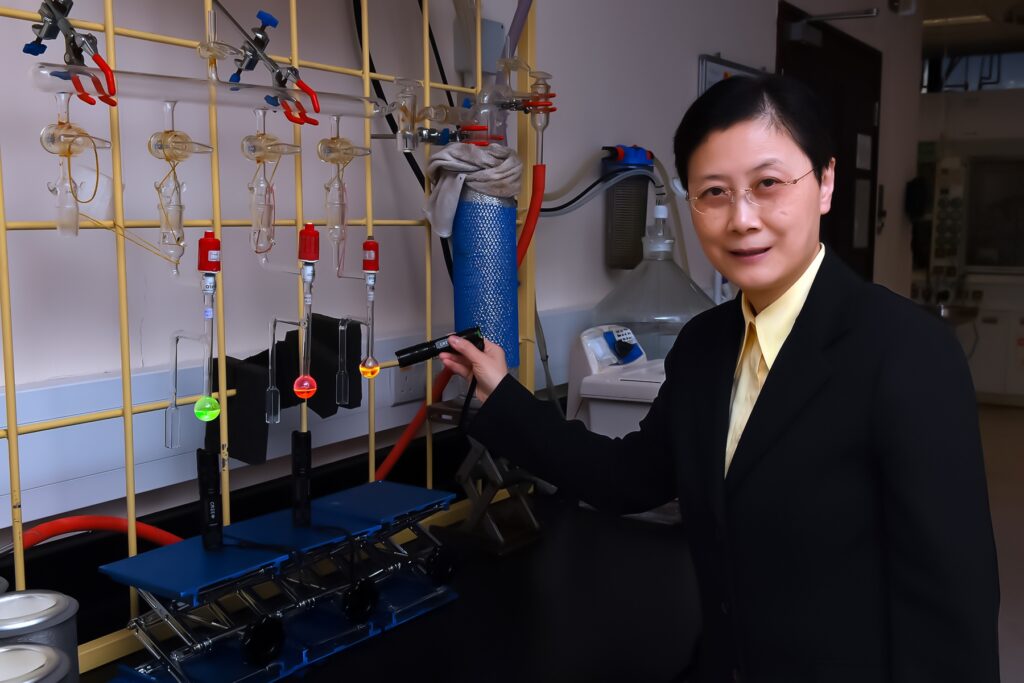
Amira Cheniour (Tunisia, b. 1978), software engineer, and creator of an irrigation system for arid areas
Amira Cheniour was born in Tunisia in 1978. She grew up on an orchard of apple and olive trees and earned degrees in electronic engineering and business administration. She noticed that in her country, there was great potential for agriculture and commerce, but these sectors were not benefiting from new technologies. Sometimes, significant advances involve realizing how people can benefit from things that already exist.
Tunisia has many agricultural areas but a very hot climate and seasonal rains. Therefore, irrigated crops need to efficiently utilize water. Cheniour founded a technology company that helps farms make better use of their resources with automated irrigation and fertilization systems that take into account weather conditions and the needs of each crop. She believes that to achieve your goals, you just need to take the first step and not be afraid of failure, as making mistakes is a part of success.
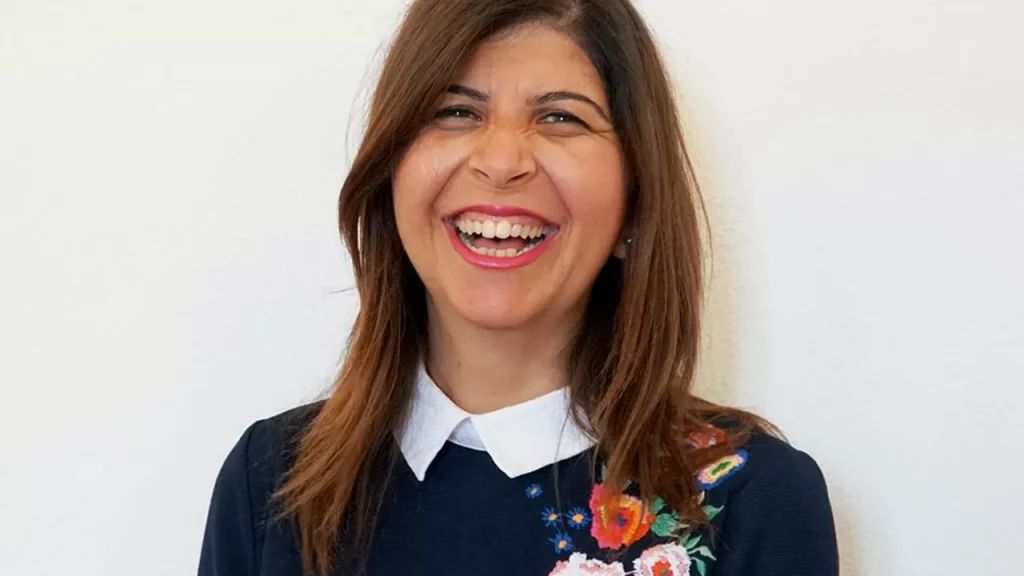
Reem Al Marzouqi ريم المرزوقي (United Arab Emirates, b. 1990), architect, and inventor of the hands-free driving car
As a child, Reem Al Marzouqi ريم المرزوقي (United Arab Emirates, b. 1990) loved cars. Drawn to mechanics, she decided to study engineering. However, it was during an ethics class that she came up with the idea of designing a vehicle that could be driven without hands for people with mobility limitations. The young engineer was inspired by armless pilot Jessica Cox, who could fly planes with her feet but experienced back pain and faced criticism from her neighbors when driving her car. At just 21 years old, Al Marzouqi became the first Arab woman to obtain a U.S. patent with her “Lower Limb-Operated Vehicle Navigation System,” which used feet for steering, changing gears, and acceleration and deceleration pedals instead of a traditional steering wheel. She puts the pedal to the metal!
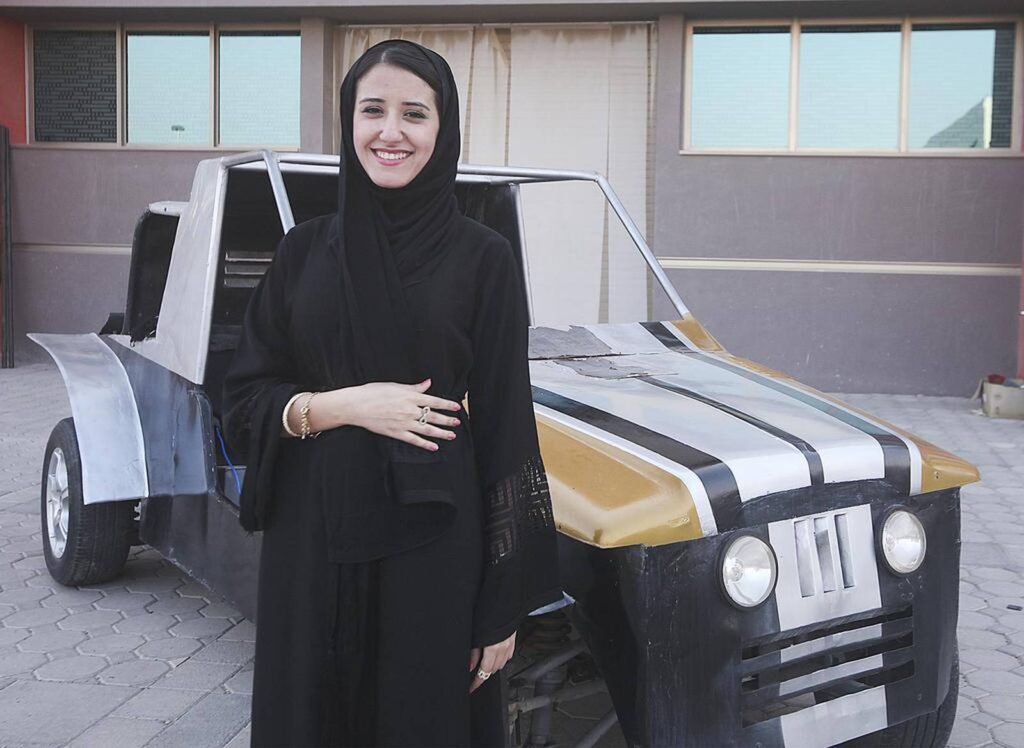
In collaboration with:

This project has received funding from the European Union’s Horizon 2020 research and innovation programme under grant agreement No 101035817.





